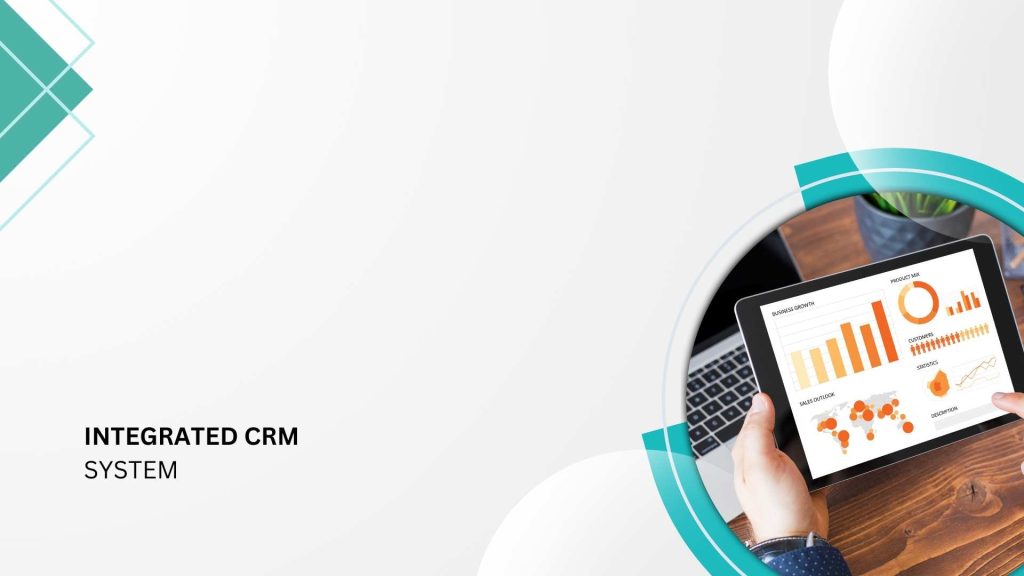Businesses today rely on integrated customer relationship management (CRM) systems to streamline operations, boost productivity, and fortify connections with their clientele. These indispensable tools consolidate data while serving as the cornerstone for endurable growth and competitive edge.
Understanding Integrated CRM Systems
At its core, an Integrated CRM system serves as a centralized hub, consolidating customer data from various touchpoints across the organization. It amalgamates information from sales, marketing, customer service, and other pertinent departments into a singular platform, providing a holistic view of customer interactions.
Streamlined Information Flow
The most evident boon of an integrated CRM system lies in its ability to streamline information flow. By eliminating data silos and disparate systems, businesses can bid farewell to inefficiencies that stem from disjointed databases and fragmented information. This seamless integration empowers teams to access real-time, comprehensive data, fostering quicker decision-making and facilitating a unified customer-centric approach across the organization.
challenges
Businesses can face many challenges without a CRM system, including:
- Data Silos
- Disconnected Customer Information
- Inefficient Communication
- Manual Data Entry
- Lack of Customer Insights
- Poor Lead Management
- Inconsistent Customer Experience
- Difficulty in Tracking Sales Pipeline
- Limited Scalability
- Missed Follow-ups and Opportunities
- Higher Operational Costs
- Difficulty in Forecasting and Reporting
steps in CRM integration in ERP system
- Assessment and Planning: Evaluate CRM and ERP systems compatibility, mapping data structures and processes for integration.
- Data Mapping: Identify corresponding data fields between CRM and ERP systems for seamless information flow.
- Select Integration Approach: Choose between middleware, APIs, or connectors for system synchronization.
- Customization and Configuration: Customize integration settings to align data, workflows, and business rules.
- Testing and Validation: Conduct strict testing to ensure proper data transfer and functionality post-integration.
- Training and Adoption: Train users on the integrated system and promote its use for seamless adoption.
- Deployment and Monitoring: Implement integration and continually monitor for performance and improvements.
The Multifaceted Benefits
Enhanced Customer Insights and Personalization
An integrated CRM system acts as a treasure trove of customer insights. Businesses can glean invaluable insights by consolidating data on preferences, purchase history, and engagement patterns. Leveraging this wealth of information allows for creating personalized marketing campaigns, tailored product recommendations, and customized service offerings, elevating customer satisfaction and loyalty.
Improved Operational Efficiency
Gone are the days of tedious manual processes and redundant data entry. An integrated CRM system automates routine tasks, such as data entry, lead management, and follow-ups, freeing up useful time for teams to concentrate on strategic initiatives. This automation bolsters efficiency and minimizes errors, ensuring accuracy and consistency in operations.
Heightened Collaboration and Communication
Seamless integration facilitates cross-departmental collaboration, fostering a shared understanding of customer needs and objectives. Sales, customer service, and marketing teams can unite effortlessly, sharing real-time information and insights. This synergy cultivates a unified front, enabling teams to align their efforts and deliver a cohesive and enhanced customer experience.
Scalability and Adaptability
The beauty of an integrated CRM system lies in its scalability and adaptability. Whether a small startup or a multinational corporation, this system can evolve alongside the business. The design accommodates these shifts as operations expand or requirements change, ensuring continued efficiency and effectiveness.
conclusion
Acumatica’s CRM software stands as a transformative tool in the arsenal of modern businesses, offering a comprehensive suite of functionalities tailored to elevate customer relationships and drive sustainable growth. Its seamless integration across departments fosters collaboration, ensuring a unified approach to customer interactions.
Acumatica empowers businesses to glean invaluable insights by harnessing advanced analytics and automation, enabling informed decision-making and personalized customer engagements. Its adaptable and scalable nature accommodates the evolving needs of enterprises, whether small-scale or large, catalyzing efficiency, agility, and, ultimately, a competitive edge in today’s dynamic market landscape.
Embracing Acumatica’s CRM software signifies not just an investment in technology but a commitment to nurturing enduring customer connections and unlocking the full potential of organizational success.

Vijay comes with a vast experience in ERP and enterprise solutions space with about 20 years of experience in various packaged application like Acumatica, SAP, Orion, Salesforce.com, SugarCRM and, SalesLogix.

